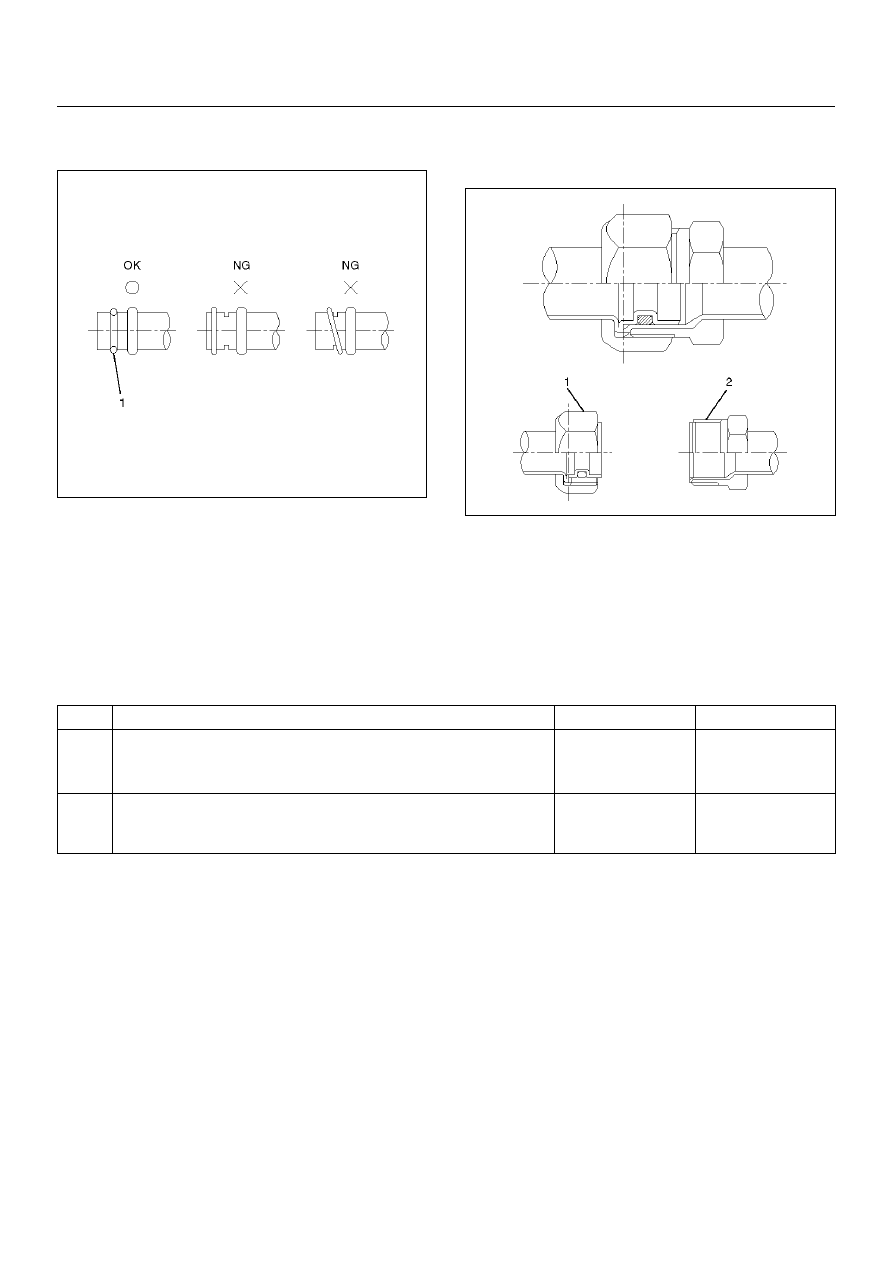Opel Frontera UE. Manual - part 19

1A–48
HEATING, VENTILATION AND AIR CONDITIONING (HVAC)
O-rings (2) must be fitted in the groove (1) of refrigerant
line.
850RW003
Insert the nut into the union.
First, tighten the nut by hand as much as possible, then
tighten the nut to the specified torque.
Leak Check
Inspection of refrigerant leak
Refrigerant leak may cause an adverse effect not only
on the performance and durability of each component of
the air-conditioner, but also on the global atmosphere.
Therefore, it is most important to repair refrigerant leak
when there is any leak found.
Inspection flow of refrigerant leak
Inspection Steps
Check the components of air-conditioner to see if there
occurs any refrigerant leak along the flow of refrigerant.
• To avoid an error in the detection of refrigerant leak,
make sure of there being no refrigerant vapor or
cigarette smoke around the vehicle before conducting
the inspection. Also, select a location where the
refrigerant vapor will not get blown off with wind.
• Inspection should be conducted chiefly on the pipe
connections and sections where a marked oil
contamination is found. When refrigerant is leaking,
oil inside is also leaking at the same time.
• It is possible to visually check the leak from inside the
cooling unit. Follow the method below when
checking. Remove the drain hose or resistor of the
cooling unit, and insert a leak detector to see if there
occurs any leak.
High Pressure Side
1. Discharger section of compressor.
2. Inlet/outlet section of condenser.
3. Inlet/outlet section of receiver driver.
4. Inlet section of cooling unit.
Low Pressure Side
1. Outlet section of cooling unit.
2. Intake section of compressor.
Step
Action
Yes
No
1
1. Evacuate the refrigerant system.
2. Charge the refrigerant.
Is there any refrigerant leak?
Repair refrigerant
system.
Go to Step 2.
2
1. Operate the compressor for more than 5 minutes to raise the
pressure on the high pressure side.
Is there any refrigerant leak at high pressure components?
Repair refrigerant
system.
Compressor
operation to be
confirmed.